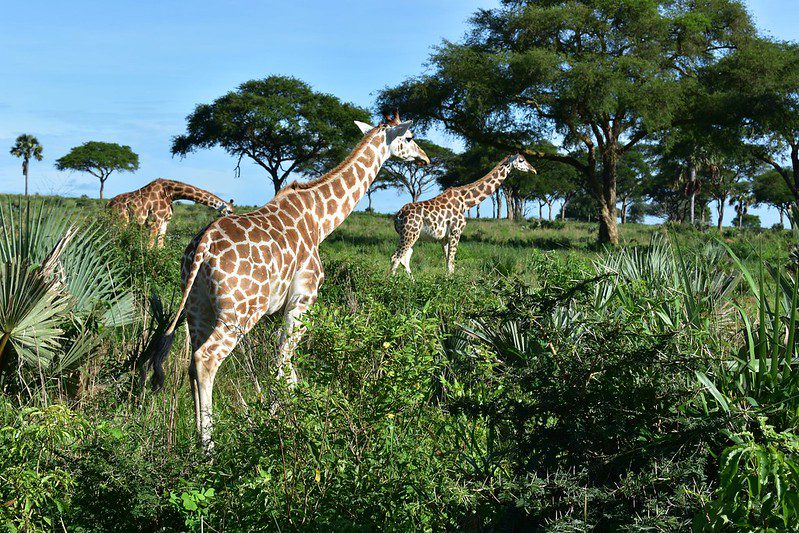Giraffes and their habitats.
Giraffes and their habitats: Standing at up to 5.9 meters (19.4 feet) tall, giraffes are the tallest mammals on the planet. They can reach foliage and fruits on higher trees thanks to their long necks. possess speckled coats, which help them blend in with their savanna surroundings. They consume leaves, fruits, and flowers because they are herbivores. By extending their front legs widely apart, these creatures have a special method of sipping water.
In sub-Saharan Africa, giraffes can be found in open forests, grasslands, and savannas. With populations in South Africa, Uganda, Kenya, Tanzania, and Botswana, they are widely dispersed throughout Africa. They choose areas close to rivers, lakes, or wetlands where there is a plenty of food and water. And they can be found in both highland and sea level settings.
Giraffes consume leaves, fruits, and flowers from trees and shrubs since they are browsers. They can break down the cellulose found in plant cell walls because of the unique nature of their digestive tract. The giraffes can consume up to 30 kg (66 lbs) of food each day, and they must frequently drink water, particularly in hot and arid climates.
After 450–460 days of gestation, giraffes give birth to a single calf. Giraffe calves at birth weigh between 50 and 60 kilos (110 and 132 pounds) and stand about 1.8 meters (6 feet) tall. Giraffe calves are protected and fed by the milk of their moms. Giraffes mature between the ages of three and four.
Because they have the highest blood pressure of any mammal, giraffes are able to defy gravity and pump blood to their brains. They use a range of sounds, body language, and scent markers to communicate with one another in a distinctive fashion. The top speed at which these large creatures can run is 50 kilometers per hour (31 miles per hour).
Large tracts of habitat are necessary for giraffes to wander and forage, usually in places with plenty of food and water. Through their browsing habits and function as predatory prey, they significantly influence their environments. With a variety of unique physical and behavioral adaptations, giraffes are suited to live in hot, dry climates.
A dominant male usually leads the intricate social groups in which giraffes live. Their social system is hierarchical, with dominating people in charge of subordinates.
Numerous illnesses, including as TB and trypanosomiasis (sleeping sickness), can affect giraffes. Ticks, lice, and fleas are among the parasites that live in these giraffes.
Among the many predators of giraffes are hyenas, leopards, and lions. Conflict between humans and wildlife, as well as habitat loss and fragmentation, pose threats to them. Although it is against the law in many nations, giraffes are occasionally hunted for their meat and hides.
Humans and giraffes occasionally clash, especially in regions where human settlements or agricultural land border giraffe habitats. Conflicts with people may result from giraffes damaging property and crops.
Because of habitat loss, fragmentation, and degradation, as well as conflict between humans and wildlife, the giraffe is classified as Vulnerable on the IUCN Red List. To save giraffe populations and their habitats, a number of conservation initiatives are underway.
Giraffes and their natural environments
Giraffes can be found at Murchison Falls National Park, Queen Elizabeth National Park, Lake Mburo National Park, Serengeti National Park, Amboseli National Park, and Akagera National Park in Uganda, Kenya, Tanzania, and Rwanda, respectively. These are the most well-known countries featuring giraffes in their parks.
To see giraffes in their native environment, you can travel to any of these nations at any time of year. The benefit of visiting any national park is that you will have the chance to witness a wide variety of other species.




